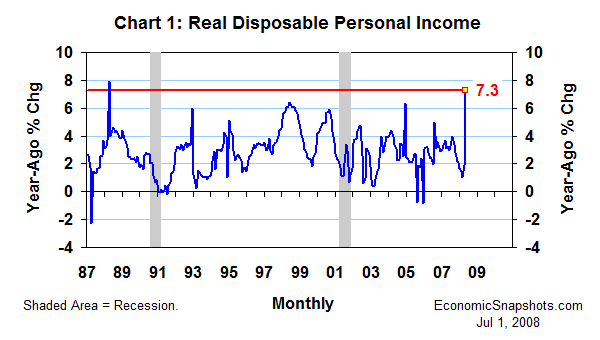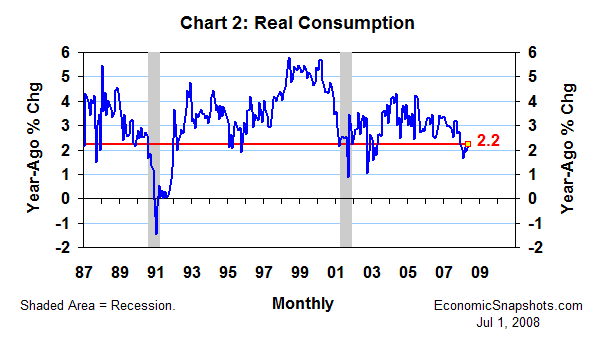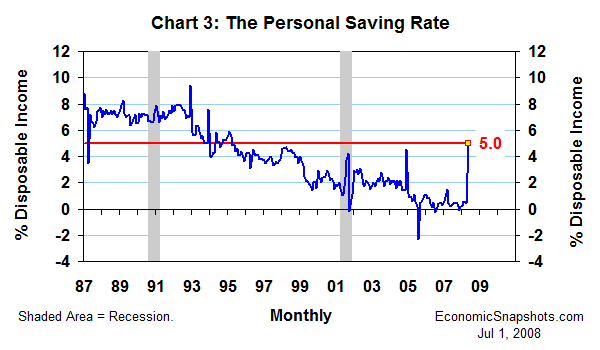
| Back to Index |
July 1, 2008 – In Friday’s data, U.S. real disposable personal income shot up by 5.3% in May after a 0.1% April rise.
May’s real disposable income gain was the second highest ever – exceeded only by a 5.9% increase in May 1975. (These data start in February 1959.)
The rising flow of one-time Federal tax rebates accounted for all of May’s oversized income growth. These special payments were mandated by the Economic Stimulus Act of 2008. The government began to send out these rebates, in weekly batches, on April 28. It plans to complete this distribution in mid-July.
Excluding the Economic Stimulus rebates, real disposable income was only about flat in April and May. This lack of other income growth suggests that the economy was having some trouble standing on its own two feet. The government hopes that rebate-driven spending will help to jumpstart the economy and lift future income growth.
Compared to the same month last year, real disposable personal income rose by 7.3% in May (+1.9 % in April, Chart 1). This twelve-month May income gain was the strongest since April 1988.

It remains to be seen whether consumers will spend or save their rebates. The more they spend the greater the resulting economic stimulus. As of May, the spending response seemed to be very small.
Real consumption rose by 0.4% in May, after rising by 0.2% in April. May’s real consumption growth was the strongest monthly showing since August last year. But, it came in miles behind that spectacular May income gain.
Further, as of May, the broader twelve-month real consumption trend seemed to be entirely unmoved. Compared to the same month last year, real consumption rose by 2.2%% in May (+1.9% in April, Chart 2).

This consumption trend dipped briefly down to 1.6% in February. Apart from February, it has been fluctuating in a narrow range of 1.9% to 2.2% since December last year.
With consumers’ after-tax income rising so much faster than their spending, the personal saving rate shot up by 4.6 percentage points to 5% in May (Chart 3).

In May, the saving rate reached its highest level since March 1995. May’s increase was the largest ever (in data since February 1959).
Despite a slow start, it’s too early to write off the Economic Stimulus rebates as a failure. According to data provided by the BEA, more than half of these rebates had yet to be paid at the end of May. Further, even after consumers receive their rebates, they might need some extra time to shop.
Suzanne Rizzo